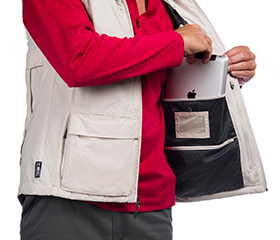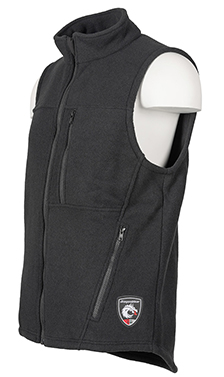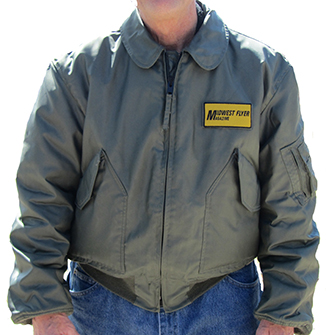by Dave Weiman
Published online Midwest Flyer Magazine – February/March 2021
The article entitled “Miracle Over Minnesota… Survival After Carbon Monoxide Poisoning,” featured in the October/November 2020 issue of Midwest Flyer Magazine (https://midwestflyer.com/?p=13674), has attracted a lot of attention nationwide! Dan Bass of Winona, Minnesota, experienced carbon monoxide poisoning while flying his Mooney M20C Ranger in the winter, survived a crash-landing while unconscious, and shared his experience with us. Hopefully we can learn from his experience and avoid what happened to him by being better prepared.
First, it was determined that the carbon monoxide poisoning was caused by a crack in the muffler of his aircraft, beneath the heat shroud. While running the cabin heat, exhaust rich carbon monoxide was being pumped into the cabin. The cause of the crack is unknown and was not discovered during the aircraft’s annual inspection.
Second, Dan Bass did not have a carbon monoxide (CO) detector onboard his aircraft at the time. Immediately after publishing his article, we were getting reports from readers who were buying either the Sensorcon (sensorcon.com) CO detector and taking advantage of a 20% discount using Dan’s special coupon code Aircraft2020, or other detectors available through Sporty’s Pilot Shop (sportys.com).
There are apparently hundreds of CO detectors on the market, however, most of them are not well suited for aviation. They may not alert the pilot until CO concentrations reach over 100 ppm, or they may not have an alarm that is audible in a noisy cockpit. Prices range from $129.00 to $170.00, depending on desired features and personal preference.
Third, Dan Bass urges his fellow pilots to use a “pulse oximeter” to monitor their oxygen saturation levels on every flight. One would assume that CO poisoning would show up with a lower oxygen saturation reading, but it is the opposite. The pulse oximeter uses the color of your blood to determine oxygen saturation. If CO is present in your blood, the pulse oximeter will actually display a higher saturation level.
Fourth, equip your aircraft with shoulder harnesses! Bass had harnesses in his Mooney, but many legacy airplanes do not have anything more than a lap belt. The diagonal bruise Bass experienced across his chest proved that it saved his life.
Fifth, keep needed survival gear with you or fixed to a part of the airframe within easy reach. Dan Bass now flys with a “utility vest” and carries with him such items as his cell phone and backup battery, personal location beacon (PLB), portable strobe, flashlight and extra batteries, signal whistle, and signal mirror. Other emergency tools could include a small egress hammer to break the glass, a knife, some rations, a first aid kit, and a bottle of water. Bass also keeps a handheld VHF radio charged and positioned near his left leg. Pilots might also consider stowing their radio in their utility vest or clipping it to their belt, depending on the size and weight of the radio. A VHF radio can be used to alert other pilots in the area of your emergency, even while on the ground, using the emergency frequency 121.5 Mhz or your last known air traffic control frequency.

A search on the Internet revealed a number of utility vests available, such as the Q.U.E.S.T. Vest by SCOTTeVEST, which is very durable and has 42 pockets. “Q.U.E.S.T. is the embodiment of their design philosophy – a tribute to functional fashion with no detail left behind.” When not wearing the vest while flying, either in your airplane or on the airlines, tech lovers and gadget freaks will have sufficient space for all their essentials. The SCOTTeVEST retails for $199.00 (scottevest.com).
True North/Dragonwear has a fire-resistant (FR) vest called “Super Fleece™” (picture on following page), which has zippered chest and hand warmer pockets and two large inner pockets that retails for $214.95. The Super Fleece™vest offers permanent FR protection inherent in a lightweight, breathable, wind-resistant and water-repellent garment. With a CAT 4 protection rating, certified to meet NFPA 70E and NFPA 2112 ratings, it is also durable, UV fade resistant, washable, and made in the USA (https://www.truenorthgear.com/catalog/product/products/outerwear/alpha-vest). When ordering, make sure you order the Super Fleece™vest, as the manufacturer recently changed product lines. Call 800-873-5725, if in doubt.
The Duluth Trading Company also offers several vests you may wish to consider, such as the “Men’s Working Mans Vest.” The ripstop 4.3-oz. nylon fabric is Teflon® treated for supreme ruggedness, but it is still lightweight enough for hot summer days. Full-length mesh side vents and back panels provide central air you wear! And it has the hardest-working pocket combo yet, with zip napoleon pockets, flap chest pockets and large bellowed cargo pockets for gear. Thirteen (13) pockets in all. This vest retails for $89.50, on sale at press time for $49.99 (https://www.duluthtrading.com/men/outerwear/vests/).
Another economical utility vest is the “M-Tech Tactical Utility Vest,” regularly $109.99, on sale at press time for $54.99 (giv-official.com). This vest is durable and features breathable, mesh-tech construction of cotton and polyester, which makes it especially suitable for all seasons, and can easily be worn inside a flight jacket. Other features include dual panel utility pockets, and a front buckle-zip closure for styling and versatility (clubgiv.com).

Industries offers a utility vest called the “ALS Utility Vest” that retails for $100.00. This vest is designed to carry everything you need, with large exterior pockets, contrasted with an onion-quilted shell, and a button-down placket for a secure fit. Made of 100% nylon for the lining and shell, with a 100% polyester fill, this vest is recommended for light weather.
If you are looking for a quality flight jacket to wear over one of the lightweight utility vests mentioned here, you might want to consider the Alpha Industries NOMEX (fire-resistant) “CWU 36/P NOMEX” flight jacket.

Comfortable and fire-resistant, and available in military sage green, the Alpha CWU 36/P NOMEX is a summer weight military flight jacket which is made to help ward off harsh climates. Whether you are facing dry desert heat or pouring rain, the Alpha CWU 36/P NOMEX flight jacket is your best choice for staying comfortable.
Manufactured in the USA and in current contract with the Defense Department, the MSRP of the Alpha CWU 36/P NOMEX flight jacket is $850.00 (https://www.alphaindustries.com/products/mmc10015u1-mens-cwu-36-p-nomex-mil-spec-lightweight-flight-jacket).
The cold weather version of the Alpha NOMEX flight jacket is the CWU 45/P with non-removable lining (https://www.alphaindustries.com/). The MSRP for this jacket is also $850.00.
Both Alpha Industries flight jackets feature NOMEX fire resistant fabric, zipper tape, knit cuffs and waistband, tonal Velcro patch, front zipper closure with storm flap, double-stitched cargo pockets with Velcro closure, and are made to military specifications.
Sixth, Dan Bass recommends that you not fly if you don’t feel well. All pilots are required by the FAA to ground themselves should they feel medically unfit to fly for any reason, and this is good common sense. Just because we want to be somewhere at a given time, or we want to get home (i.e. get-home-itis), is not a sufficient enough reason to fly when we are sick.
EDITOR’S NOTE: Regardless of the utility vest you may purchase, they are not sold as flight vests. These vests can be worn as the owner wishes and at the owner’s own risk, and we make no claims or warranty as to their quality, protection, or effectiveness, nor do we endorse any one manufacturer or distributor.
Dan Bass lives in Winona, Minnesota, with his wife, Deanna, and two children. He owns and operates Mec-Pro Mfg, a custom equipment manufacturing company founded by his father in 1975, who was also a pilot and aircraft owner. Dan soloed on his 16th birthday and received his Private Pilot Certificate on his 17th birthday. He is currently a Certified Flight Instructor with 2500 hours. Dan Bass has since replaced his Mooney M20C Ranger with a Mooney M20K 231.